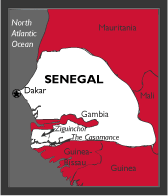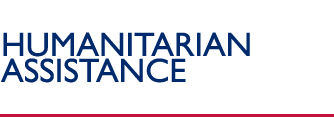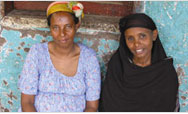 |
|
 |
 |
 |
USAID Information:
External Links:
|
|
 |
 |
|
Senegal
|
Download this program description (pdf, 25kb)
Strengthen Rehabilitative Services for People with Disabilities
Implementing Partner:
Handicap International (HI)/France

Funding Period: March 2004 - March 2007
Amount: $1,000,000
Purpose: Improve the lives of people
disabled by mine accidents and other causes, and implement
educational activities to prevent further accidents.
Objectives
- Improve the organization and quality of care in in orthopedic surgery and rehabilitation
in the Ziguinchor region.
- Help people with disabilities—mine victims or others—rejoin their communities.
- Consolidate the mine education and awareness program by turning
it over progressively to the local population.
|
| Read how small loans have assisted a landmine victim in Senegal |
In 1982, supporters of the Democratic Forces Movement of the Casamance
demanded that the Government of Senegal grant independence to the Casamance
region, an isolated section of southwestern Senegal. This event sparked an
eighteen-year conflict, whose reprecussions included armed movements in
Guinea Bissau and the dislocation of populations in Gambia. The situation
worsened in 2000 when armed groups began leaving behind rings of antipersonnel
landmines to cover their retreat. Landmines have affected the population and
have hampered donor and NGO efforts in the region. Handicap International
statistics indicate that of its approximately 1,300,000 inhabitants,
the Casamance current has close to 700 landmine victims, 230 abandoned villages,
and 30,000 displaced persons.
In July 2001, USAID began to provide funding to Handicap International to
support its program to assist victims of landmine accidents and to raise
awareness of the dangers of mines and unexploded ordnance.
The program facilitated the rehabilitation of people with disabilities in the
Casamance, including the regionalization of orthopedic services. It also supported
local associations that assist people with landmine injuries and other disabilities
during their treatment and eased their return to families and communities.
In addition, the program conducted training to integrate mine awareness messages
into school curriculums and disseminate these messages throughout villages in the
region.
Under a new agreement signed in March 2004, rehabilitation efforts will are
extending into the region of Ziguinchor, an area also hard hit by the conflict.
Moreover, Handicap International is piloting a community relay agent program in the
landmine-affected zones of Niaguis, Nyassia, and Diouloulou. Agents assist in
identifying and supporting people with disabilities in these communities.
Back to Top ^
|


